To install a garage heater, follow these steps:
1) Determine the type of heater suitable for your garage;
2) Choose a location for installation, ensuring proper clearance from combustible materials;
3) Install the heater according to the manufacturer’s instructions;
4) Connect the heater to an appropriate power source. Installing a garage heater can provide much-needed warmth during colder months, making your garage a more comfortable and functional space.
Whether you’re using your garage as a workshop, storage area, or for parking vehicles, a heater can help maintain a suitable temperature. In this guide, we’ll walk you through the steps to install a garage heater, ensuring safe and efficient operation.
By the end, you’ll be ready to enjoy a warm garage and maximize its use throughout the year.
Benefits Of Installing A Garage Heater
Installing a garage heater can bring numerous benefits to your garage, allowing you to enjoy a more comfortable working environment, extend your workable hours in cold weather, and ensure the protection of your vehicles and other valuable items from extreme temperatures. By taking advantage of these benefits, you can make your garage a more functional and enjoyable space.
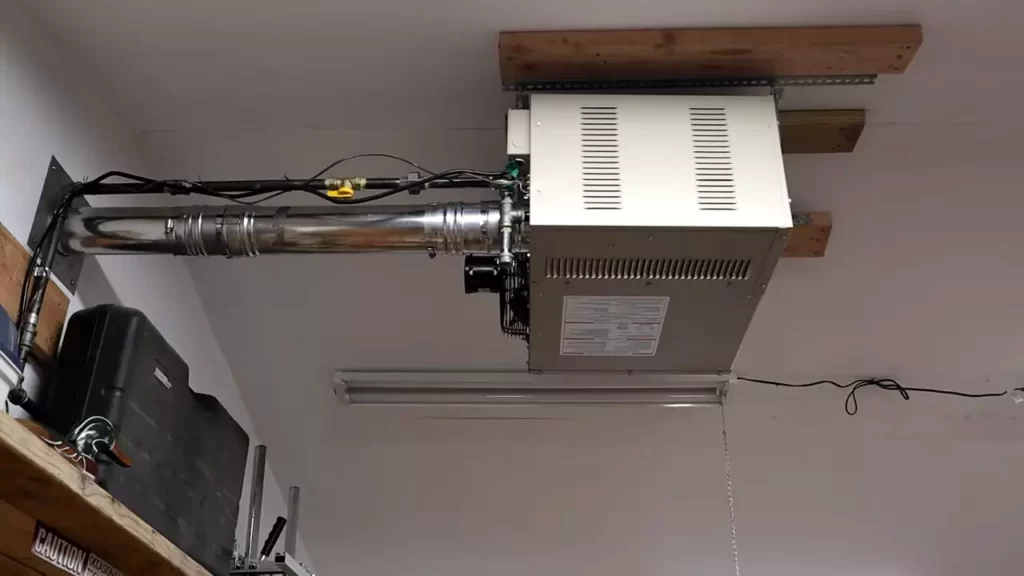
Improve Comfort in Your Garage
A garage heater can significantly improve the comfort level in your garage, turning it into a cozy and welcoming space. Whether you use your garage as a workshop, storage area, or even an additional living space, a heater can help you maintain a consistent temperature and eliminate the unpleasant coldness that can often be associated with this type of space.
With a garage heater, you no longer have to worry about freezing temperatures hindering your productivity or making it uncomfortable to spend time in your garage. You can work on your projects, hobbies, or repairs with ease, knowing that you have a warm and inviting environment to retreat to.
Extend Workable Hours in Cold Weather
Having a garage heater allows you to extend your workable hours even during the cold winter months. Instead of being limited by the changing seasons and unfavorable weather conditions, you can continue working in your garage with comfort and convenience.
Whether you need to work on your car, complete DIY projects, or pursue hobbies that require a temperature-controlled environment, a garage heater ensures that you can continue with your tasks without interruptions. Say goodbye to having to postpone your projects due to chilly temperatures, and embrace the flexibility and extended workability that a garage heater provides.
Protect Your Vehicles and Other Items from Extreme Temperatures
Extreme temperatures can have a detrimental effect on your vehicles and other items stored in your garage. Freezing temperatures can cause damage to engines, tires, batteries, and other sensitive components, resulting in costly repairs and replacements. Moreover, fluctuating temperatures can also have adverse effects on items such as paints, chemicals, and even delicate woodwork.
By installing a garage heater, you can keep your vehicles and belongings safe from extreme temperatures, ensuring their longevity and preserving their quality. A consistent and controlled environment eliminates the risk of freezing or overheating, helping you maintain the optimal condition of your possessions.
Investing in a garage heater is a practical decision that brings multiple benefits. By improving comfort, extending workable hours, and protecting your vehicles and other items from extreme temperatures, you can transform your garage into a functional and valuable space. Don’t let the cold weather hinder your productivity or jeopardize the condition of your belongings; install a garage heater and enjoy the advantages it brings.
Factors To Consider Before Installing A Garage Heater
Before installing a garage heater, there are a few important factors that you need to consider to ensure that you choose the right heater for your needs. Taking these factors into account will help you make an informed decision and ultimately result in an efficient and effective heating solution for your garage.
Size and layout of the garage
The size and layout of your garage play a crucial role in determining the type and size of heater that will be suitable for your needs. The first step is to measure the dimensions of your garage. Take into account the length, width, and height, as well as any additional space that may need heating, such as an attic or workspace within the garage.
Once you have the measurements, you can refer to the manufacturer’s specifications to determine the appropriate heater size for your garage. Choosing the right size ensures that you achieve the desired temperature and that the heater operates efficiently without consuming excess energy.
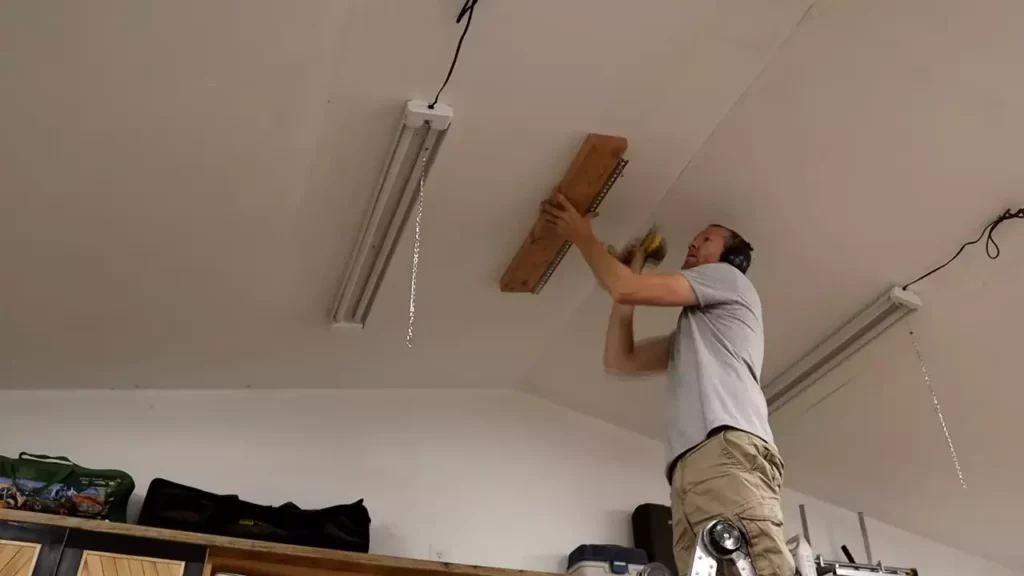
Type of heater suitable for your needs
There are various types of garage heaters available in the market, each with its own advantages and disadvantages. It is essential to understand the different types to determine which one suits your needs best.
One of the most common types is the forced air heater, which blows hot air into the garage, quickly heating up the space. These heaters are ideal for larger garages or for those who need to heat the garage quickly.
Another option is radiant or infrared heaters, which emit heat waves that warm objects and people directly without heating the air in the garage. These heaters are more energy-efficient and are suitable for smaller garages or for individuals who want to focus the heat in specific areas.
Power source availability and requirements
Before purchasing a garage heater, it is crucial to assess the power source availability and requirements in your garage. Some heaters require an electrical connection, while others may run on natural gas, propane, or even wood pellets.
Check if you have the necessary outlets or if any wiring modifications are needed to accommodate the heater. Additionally, consider the power requirements of the heater and ensure that your garage’s electrical system can handle the load. Consulting a professional electrician is recommended to ensure safety and proper installation.
Moreover, if you opt for a fuel-based heater, make sure you have a suitable fuel source available and access to proper ventilation to prevent the accumulation of carbon monoxide.
Taking into account these factors will help you select the right garage heater for your specific needs, ensuring that your garage remains comfortable and functional throughout the year.
Step-By-Step Guide To Installing A Garage Heater
Welcome to our step-by-step guide on how to install a garage heater. If you’re tired of working in a cold garage during those winter months, a garage heater is a perfect addition to keep you warm and comfortable. In this guide, we will walk you through the installation process, ensuring proper ventilation and safety measures, selecting the appropriate type of heater for your garage, gathering all the necessary tools and materials, installing the mounting brackets or supports, connecting the heater to the power source, installing the ventilation system, and testing the heater for proper functioning and safety.
Determine the ideal location for the heater
Before starting the installation process, it is crucial to determine the ideal location for your garage heater. Consider factors such as the size of your garage, the layout, and the space available. It’s essential to choose a location that provides optimal heat distribution while ensuring easy access for maintenance and repairs. Additionally, ensure that the heater is positioned away from any flammable materials or objects.
Ensure proper ventilation and safety measures
Ventilation is a critical aspect of garage heater installation to prevent the accumulation of toxic fumes such as carbon monoxide. Ensure that your garage has proper ventilation, whether through windows, vents, or an exhaust system. It’s also important to install a carbon monoxide detector near the heater for added safety. Remember to follow all safety guidelines provided by the manufacturer and consult a professional if needed.
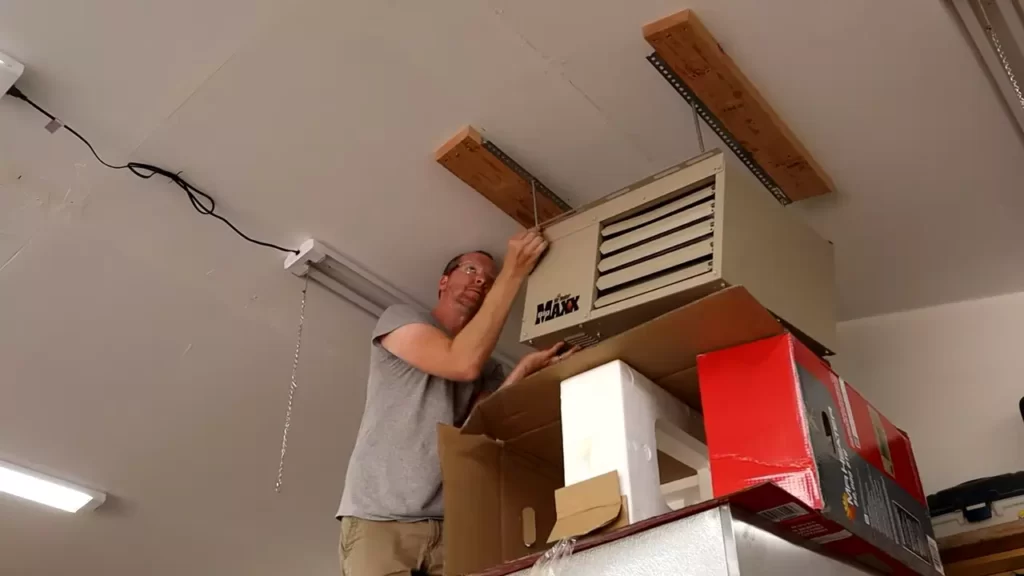
Select the appropriate type of heater for your garage
Choosing the right type of heater for your garage is essential for optimal performance and energy efficiency. Consider factors such as the size of your garage, insulation, and the desired temperature range. There are various types of garage heaters available, including electric, propane, natural gas, and infrared heaters. Research and select the one that suits your needs and budget.
Gather all the necessary tools and materials
Before starting the installation, gather all the necessary tools and materials required for the job. This may include a drill, screws, mounting brackets, electrical wires or gas connections (depending on the type of heater), ductwork for ventilation, and insulation materials. Having everything prepared beforehand will save you time and ensure a smoother installation process.
Install the mounting brackets or supports
Begin the installation process by installing the mounting brackets or supports for your garage heater. Refer to the manufacturer’s instructions for the correct placement and installation method. Use a level to ensure that the brackets are straight and secure. This step is crucial as it provides a sturdy base for your heater and ensures proper airflow for heat circulation.
Connect the heater to the power source
If you’re installing an electric garage heater, you’ll need to connect it to the power source. Ensure that you have a dedicated circuit for the heater with the appropriate voltage and amperage. Follow electrical codes and safety guidelines when wiring the heater. If you opt for a gas or propane heater, consult a professional for proper connection and installation.
Install the ventilation system
Proper ventilation is essential to ensure the safe operation of your garage heater. Install a ventilation system that allows the fumes and combustion byproducts to escape outside. This can involve installing vents, exhaust pipes, or ductwork. Follow local building codes and manufacturer’s guidelines to ensure a safe and efficient ventilation system.
Test the heater for proper functioning and safety
Once the installation is complete, it’s crucial to test the garage heater for proper functioning and safety. Turn on the heater and ensure that it ignites and produces heat as expected. Check for any gas leaks or electrical malfunctions. Test the carbon monoxide detector to ensure it is working correctly. If any issues arise, consult a professional to resolve them before regular use.
Follow this step-by-step guide to install a garage heater and enjoy a warm and comfortable workspace all year round. Remember to prioritize safety and consult a professional if you’re unsure about any aspect of the installation process. Stay warm and happy working in your garage!
Types Of Garage Heaters And Their Installation Requirements
When it comes to keeping your garage warm during the winter months, installing a garage heater is a smart and practical solution. However, not all garage heaters are created equal. There are different types of garage heaters available, each with its own installation requirements and considerations. In this section, we will explore the three main types of garage heaters: electric garage heaters, gas-powered garage heaters, and radiant garage heaters. We will also discuss the installation considerations for each type to help you make an informed decision.
Electric Garage Heaters
Electric garage heaters are a popular choice among homeowners due to their ease of installation and energy efficiency. These heaters work by converting electricity into heat, and they are typically wall-mounted or ceiling-mounted for maximum efficiency. The installation process for electric garage heaters is relatively simple and straightforward.
Installation Considerations for Electric Garage Heaters:
- Ensure that you have access to a dedicated 220-volt electrical circuit to power the heater.
- Follow the manufacturer’s instructions for mounting the heater securely to the wall or ceiling.
- Consider the recommended clearance distances provided by the manufacturer to prevent any potential fire hazards.
- For optimal heating, position the heater in a central location in your garage.
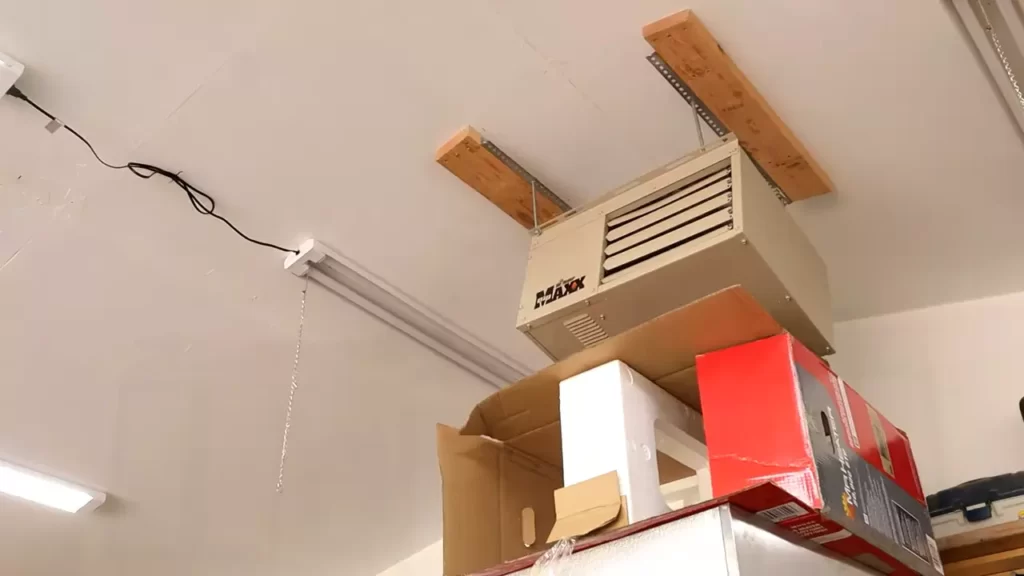
Gas-Powered Garage Heaters
Gas-powered garage heaters are an excellent option if you have access to a natural gas or propane line. These heaters are known for their powerful heating capabilities and are often used in larger garages or workshops. Before installing a gas-powered garage heater, it is crucial to ensure that you meet all the necessary safety requirements.
Installation Considerations for Gas-Powered Garage Heaters:
- Hire a professional to install a gas line if you do not already have one. Safety should be your top priority when dealing with gas-powered appliances.
- Make sure the area where you plan to install the heater has proper ventilation to prevent carbon monoxide buildup.
- Follow the manufacturer’s instructions for mounting the heater securely and connecting it to the gas line.
- Regularly inspect and maintain the heater to ensure its safe and efficient operation.
Radiant Garage Heaters
Radiant garage heaters use infrared radiation to directly heat objects and people in the garage rather than heating the air. These heaters are known for their efficiency and ability to provide consistent and comfortable heat. Installing a radiant garage heater requires careful consideration of its placement and coverage area.
Installation Considerations for Radiant Garage Heaters:
- Choose a suitable location for the heater that provides maximum coverage for your garage space.
- Consider the recommended mounting height to ensure proper heat distribution.
- Follow the manufacturer’s instructions for securely mounting the heater to the wall or ceiling.
- Ensure that there are no obstructions blocking the heat radiation from the heater.
By understanding the installation requirements and considerations for each type of garage heater, you can select the right one that suits your needs and ensures a warm and comfortable garage space during the colder months. Whether you choose an electric, gas-powered, or radiant garage heater, make sure to follow the manufacturer’s instructions and prioritize safety throughout the installation process.
Cost Of Installing A Garage Heater
Installing a garage heater is an excellent way to increase comfort and usability in your garage, especially during those cold winter months. While the benefits of a garage heater are clear, it’s essential to consider the cost of installation. Understanding the factors that influence the cost, the average installation cost breakdown, and the long-term cost savings and returns on investment can help you make an informed decision. In this guide, we’ll explore these aspects of the cost of installing a garage heater.
Factors influencing the cost
Several factors can influence the overall cost of installing a garage heater. By understanding these factors, you can get a better idea of what to expect regarding the expenses involved. Here are some crucial factors to consider:
- Heater type: The type of garage heater you choose will significantly impact the installation cost. Common types include electric, propane, and natural gas heaters, each with its unique installation requirements and associated costs.
- Garage size: The size of your garage will determine the heating capacity needed and, consequently, the cost of the heater itself. Larger garages require more powerful heating systems, which can be more expensive.
- Insulation: The level of insulation in your garage can affect the cost of installation. If your garage is well insulated, it can help retain heat, reducing the workload on the heater and potentially lowering installation costs.
- Installation complexity: The complexity of the installation process can influence the overall cost. Factors such as the layout of your garage, existing ductwork or ventilation systems, and the need for additional wiring or gas lines can increase installation expenses.
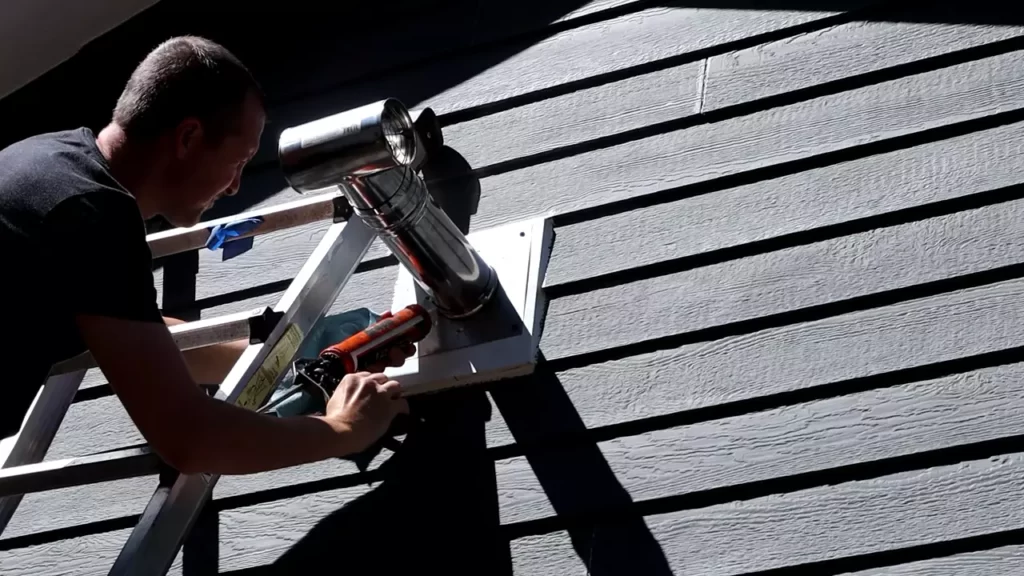
Average installation cost breakdown
On average, the cost of installing a garage heater can range anywhere from $500 to $3,000 or more. The specific cost breakdown may vary depending on the factors mentioned earlier. Here is a general breakdown of where you can expect the installation costs to be allocated:
| Expense | Percentage of Total Cost |
|---|---|
| Heater unit | 40% |
| Installation labor | 40% |
| Additional materials (wiring, ductwork, etc.) | 20% |
Keep in mind that these percentages are approximate and can vary from one installation to another. It’s advisable to get multiple quotes from reputable contractors to have a better understanding of the costs specific to your situation.
Long-term cost savings and returns on investment
While the initial cost of installing a garage heater may seem significant, it’s essential to consider the long-term cost savings and returns on investment. A well-installed and properly maintained garage heater can provide several benefits, including:
- Energy efficiency: Modern garage heaters are designed with energy efficiency in mind, helping to reduce overall heating costs compared to outdated or inefficient heating systems.
- Increased productivity: A heated garage creates a more comfortable working environment, allowing you to work on projects year-round without the worry of freezing temperatures.
- Protection of valuables: Cold temperatures can damage tools, equipment, and other valuables stored in your garage. A heater helps protect your belongings from temperature-related wear and tear.
- Improved vehicle lifespan: Cold starts can put a strain on your vehicles. With a garage heater, you can keep your vehicles warm, promoting easier starts, reducing engine wear, and potentially extending their lifespan.
When considering the cost of installing a garage heater, it’s crucial to weigh these long-term benefits against the initial investment. Over time, the cost savings, increased productivity, and protection of your valuable assets can make the installation well worth it.
Safety Measures To Follow During Garage Heater Installation
When it comes to installing a garage heater, ensuring safety should be your top priority. Following the right safety measures will not only protect you and your property but also ensure the efficient and effective functioning of your heater. In this section, we will discuss the key safety measures that you need to follow during garage heater installation.
Proper electrical wiring and grounding
Proper electrical wiring and grounding are essential for the safe installation of a garage heater. Here are some important considerations to keep in mind:
- Make sure the electrical circuit you are using can handle the power requirements of the heater. Check the manufacturer’s instructions for the recommended electrical specifications.
- Ensure that the wiring is done by a qualified electrician who follows the local building codes and regulations.
- Use appropriate wiring materials and connectors to ensure proper electrical connections.
- Properly ground the heater to prevent electrical shock or other electrical hazards.
Ventilation requirements and carbon monoxide monitoring
Proper ventilation is crucial for the safe operation of a garage heater. Inadequate ventilation can lead to the accumulation of toxic gases, such as carbon monoxide. Here’s what you should do:
- Determine the ventilation requirements specified by the manufacturer. This may include the size and number of vents needed and the recommended placement.
- Install carbon monoxide detectors in your garage to monitor the level of this dangerous gas.
- Regularly check and clean the vents to ensure proper airflow and prevent any blockages.
Fire safety precautions
When installing a garage heater, it’s important to take the necessary precautions to prevent fire hazards. Here are some fire safety measures you should follow:
- Keep flammable materials, such as gasoline and propane, stored away from the heater.
- Avoid using the heater near combustible materials or in close proximity to walls or other structures.
- Install a fire extinguisher in your garage and make sure it is easily accessible.
Regular maintenance and inspections
Maintaining and inspecting your garage heater on a regular basis is essential for its safe and efficient operation. Here’s what you need to do:
- Follow the manufacturer’s recommendations for regular maintenance tasks, such as cleaning or replacing filters.
- Inspect the heater for any signs of damage or wear and tear. If you notice any issues, have them addressed by a professional before using the heater again.
- Schedule professional inspections at least once a year to ensure the heater is in good working condition.
By following these safety measures, you can enjoy a warm and comfortable garage while ensuring the well-being of yourself, your loved ones, and your property.
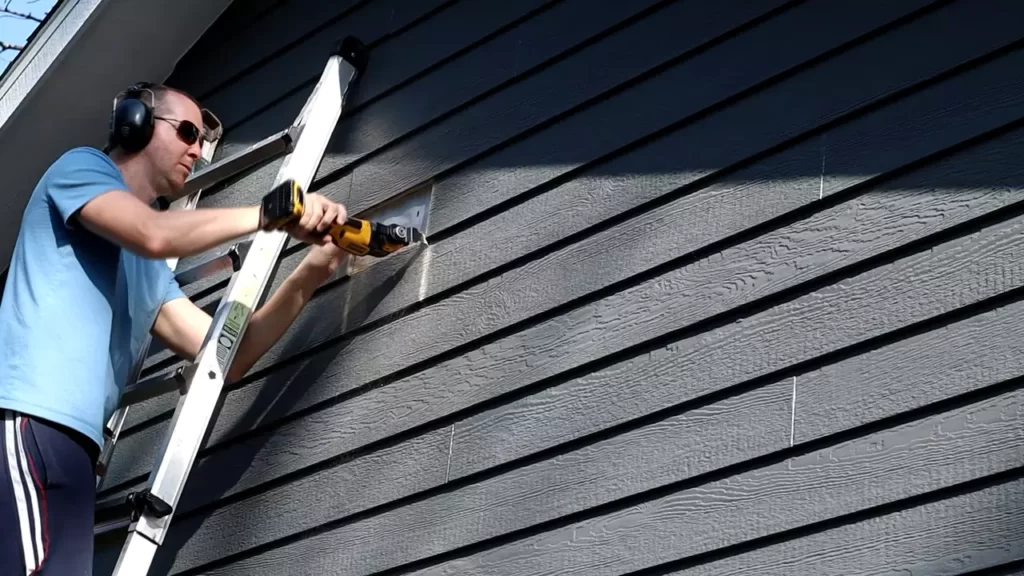
Troubleshooting Common Issues During Garage Heater Installation
Installing a garage heater can be a great way to make your workspace more comfortable during those colder months. However, like any installation, it can come with its fair share of challenges. In this section, we will discuss some common issues you may encounter during the installation process and how to troubleshoot them.
Heater not producing enough heat
If you find that your garage heater is not producing enough heat, there could be a few possible causes. Here are some steps you can take to troubleshoot this issue:
- Check the power source: Make sure the heater is properly connected to a power source and that the circuit breaker has not tripped.
- Inspect the thermostat: Verify that the thermostat is set to the desired temperature and is functioning correctly. If necessary, recalibrate or replace the thermostat.
- Check the heating elements: Ensure that the heating elements are clean and free from any debris or damage. Dirty or damaged heating elements can affect the heater’s efficiency.
- Verify the fan operation: Ensure that the fan is working correctly and moving air efficiently. A faulty fan may hinder heat distribution.
- Consider insulation: Evaluate the insulation in your garage to prevent heat loss. Proper insulation can help retain the warmth generated by the heater.
Incorrect thermostat setting
Having an incorrect thermostat setting can result in inadequate heating or no heating at all. Here are some troubleshooting tips for this issue:
- Check the thermostat settings: Verify that the thermostat is set to “heat” mode and the temperature is set appropriately.
- Calibrate the thermostat: If the temperature readings are inaccurate, recalibrate the thermostat according to the manufacturer’s instructions.
- Ensure proper placement: Make sure the thermostat is installed in a location where it can accurately measure the ambient temperature of the garage. Avoid placing it near direct heat sources or cold drafts.
- Consider upgrading to a programmable thermostat: A programmable thermostat allows you to set heating schedules, optimize energy efficiency and ensure the garage is heated when needed.
Poor ventilation or airflow issues
Inadequate ventilation or airflow can hamper the performance of your garage heater. Here are some troubleshooting tips to resolve this issue:
- Clear obstructions: Remove any obstructions, such as boxes or debris, that may be blocking the airflow around the heater.
- Inspect ductwork and vents: Check for any blockages or damage in the ductwork and vents, ensuring there are no leaks or disconnections.
- Adjust air registers: Ensure that the air registers in your garage are open and unobstructed, allowing free airflow.
- Consider additional ventilation: If your garage lacks proper ventilation, you may need to install additional vents or fans to improve airflow.
Malfunctioning components and electrical issues
Malfunctioning components and electrical issues can cause problems during garage heater installation. Here are some troubleshooting steps to resolve these issues:
- Check for loose connections: Ensure all electrical connections are secure and tight, paying attention to any loose wires or terminals.
- Inspect circuitry: Examine the control board or circuitry for any visible damage, such as burnt components or blown fuses. If necessary, replace or repair the damaged parts.
- Test electrical supply: Use a multimeter to measure voltage and ensure that the electrical supply to the heater is within the recommended specifications.
- Hire a professional: If you are unfamiliar with electrical work or suspect a major issue, it is recommended to consult a licensed electrician to diagnose and fix the problem.
Tackling common issues during garage heater installation requires a systematic approach and attention to detail. By troubleshooting these problems, you can ensure that your garage heater operates efficiently, providing the warmth and comfort you desire in your workspace.
Recommended Garage Heater Brands And Models
Choosing the right garage heater is essential to ensure a comfortable and functional space. With a wide range of brands and models available in the market, it can be overwhelming to make a decision. That’s why we have narrowed down the best garage heater brands and their top-performing models to help you with your choice. Whether you need a powerful propane heater or a versatile electric heater, these brands have got you covered. Read on to discover high-quality brands with reliable performance, popular garage heater models and their features, and customer reviews and ratings for different models.
High-quality brands with reliable performance
When it comes to reliability and performance, certain brands stand out in the garage heater market. These brands have gained a solid reputation based on their commitment to delivering high-quality products. Here are some of the top-rated garage heater brands:
- Mr. Heater: Known for their durable and efficient heaters, Mr. Heater offers a wide range of gas-powered and electric models. Their heaters are built to last and provide consistent heat output for your garage.
- Modine: Modine is renowned for its high-performance infrared heaters. These heaters are designed to quickly heat up your garage without wasting energy and are known for their efficiency and reliability.
- King Electric: King Electric specializes in electric garage heaters that are not only powerful but also energy-efficient. Their models offer advanced features such as adjustable thermostats and fan-only modes, providing you with optimal control over your garage’s temperature.
- Fahrenheat: Fahrenheat is a trusted brand when it comes to electric garage heaters. Their models are known for their durability, precise temperature control, and safety features, making them a popular choice among homeowners.
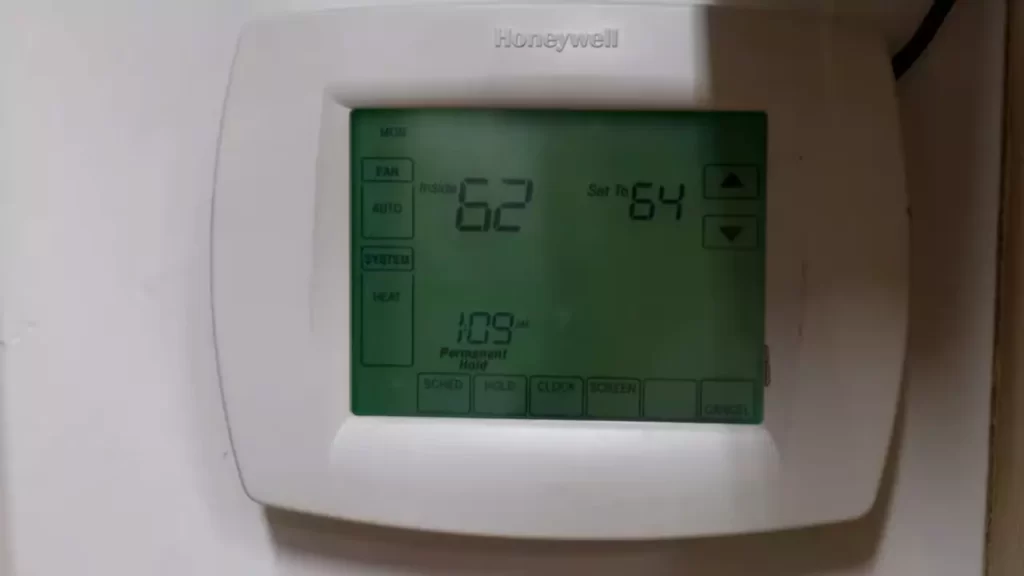
Popular garage heater models and their features
Now that you are familiar with some of the top garage heater brands, let’s explore their popular models and the features that set them apart:
| Brand | Model | Features |
|---|---|---|
| Mr. Heater | MH40LP Portable Propane Heater |
|
| Modine | HDS45AS0111 Hot Dawg Garage Heater |
|
| King Electric | KBP2406 Electric Garage Heater |
|
| Fahrenheat | FUH54 Electric Garage Heater |
|
Customer reviews and ratings for different models
To ensure you make an informed decision, it’s essential to consider customer reviews and ratings. Here are some insights from customers who have used these garage heater models:
- Mr. Heater MH40LP: Customers praise its portability and efficient heating performance, stating that it quickly warms up their garages even in colder climates.
- Modine HDS45AS0111: Users appreciate its quiet operation and the ability to quickly heat up larger spaces, making it a top choice for commercial garages.
- King Electric KBP2406: Homeowners love the precise temperature control and the directional airflow feature, which allows them to direct heat where it’s needed the most.
- Fahrenheat FUH54: Customers mention its ease of installation and reliable heating performance, making it a popular choice for smaller garages and workshops.
Considering these customer reviews and ratings can give you valuable insights into the performance and reliability of each garage heater model, helping you make the right choice for your specific needs.
Diy Vs Professional Installation: Pros And Cons
When it comes to installing a garage heater, you may be faced with the decision of tackling the project yourself or hiring a professional installer. Both options have their own set of pros and cons, and it is important to weigh them carefully before making a decision. In this section, we’ll explore the benefits of hiring a professional installer as well as the cost savings and learning experience of a DIY installation. We’ll also discuss considerations for complex installations.
Benefits of Hiring a Professional Installer
While a DIY installation may seem appealing due to cost savings and the satisfaction of completing the project yourself, there are several benefits to hiring a professional installer:
- Expertise and Experience: Professionals have the knowledge and experience to handle the installation efficiently and effectively. They have likely encountered similar installations before and can troubleshoot any issues that may arise.
- Time-saving: Hiring a professional can save you valuable time. They have the necessary tools and equipment readily available, allowing them to complete the installation in a fraction of the time it may take for a DIY installation.
- Warranty and Support: Professional installers often provide warranties on their workmanship. This gives you peace of mind knowing that if any issues arise after the installation, you can rely on the installer for support and assistance.
Cost Savings and Learning Experience of DIY Installation
Opting for a DIY installation of your garage heater can have its own advantages. Here are some key points to consider:
- Cost Savings: DIY installations generally tend to be more cost-effective since you won’t have to pay for professional labor. You can save on installation fees and potentially purchase a higher quality heater within your budget.
- Learning Experience: DIY installations provide an opportunity to learn and develop new skills. By taking on the project yourself, you can gain valuable knowledge about the installation process, which may come in handy for future projects.
- Flexibility: DIY installations allow you to work at your own pace and schedule. You have control over the timeline of the project and can make adjustments as needed without relying on external contractors.
Considerations for Complex Installations
While a DIY installation can be suitable for straightforward setups, it’s important to consider the complexity of the installation before taking on the project yourself. Factors to consider include:
- Electrical and Gas Connections: If your garage heater requires complex electrical or gas connections, it is crucial to have a professional handle the installation. These connections require specialized knowledge and can pose safety hazards if not done correctly.
- Building Permits and Codes: Complex installations may require building permits and adherence to specific building codes. Professionals are well-versed in these regulations and can ensure that your installation meets all necessary requirements.
- Time and Effort: Complex installations often require more time and effort to complete. If you’re not confident in your abilities or don’t have the necessary tools and equipment, it may be best to leave the job to a professional.
Ultimately, the decision between DIY and professional installation depends on your skill level, the complexity of the installation, and the resources available to you. While a DIY installation can save you money and provide a learning experience, hiring a professional can offer peace of mind, expertise, and efficient installation. Carefully consider your options before making a decision to ensure a successful and safe installation of your garage heater.
Frequently Asked Questions Of How To Install A Garage Heater
Can You Install A Garage Heater Yourself?
Yes, you can install a garage heater yourself. However, it is important to ensure that you have the necessary knowledge and skills to do so safely. It is recommended to follow the manufacturer’s instructions and guidelines and consider hiring a professional if you are unsure or uncomfortable with the installation process.
How Much Does It Cost To Put A Heater In The Garage?
The cost of installing a heater in the garage varies depending on factors such as the type of heater and its size. It can range from $500 to $3000, including the heater, installation, and any additional materials required.
What Is The Easiest Garage Heater To Install?
The easiest garage heater to install is the electric infrared heater. It requires minimal setup and can be quickly mounted to a wall or ceiling. Just plug it in and enjoy instant warmth in your garage.
Does A Garage Heater Need To Be On A Separate Circuit?
Yes, a garage heater typically requires a separate circuit as it draws a significant amount of power. This helps prevent overloading of the existing electrical system and ensures safer and more efficient operation.
Conclusion
Installing a garage heater is a worthwhile investment for anyone looking to make their garage more comfortable during the colder months. By following the step-by-step instructions outlined in this blog post, you can successfully install a garage heater and enjoy a warm and cozy workspace year-round.
Remember to choose the right heater for your needs, consider safety precautions, and enlist professional help if needed. With a properly installed garage heater, you’ll have a warm and inviting space for all your projects and activities.
